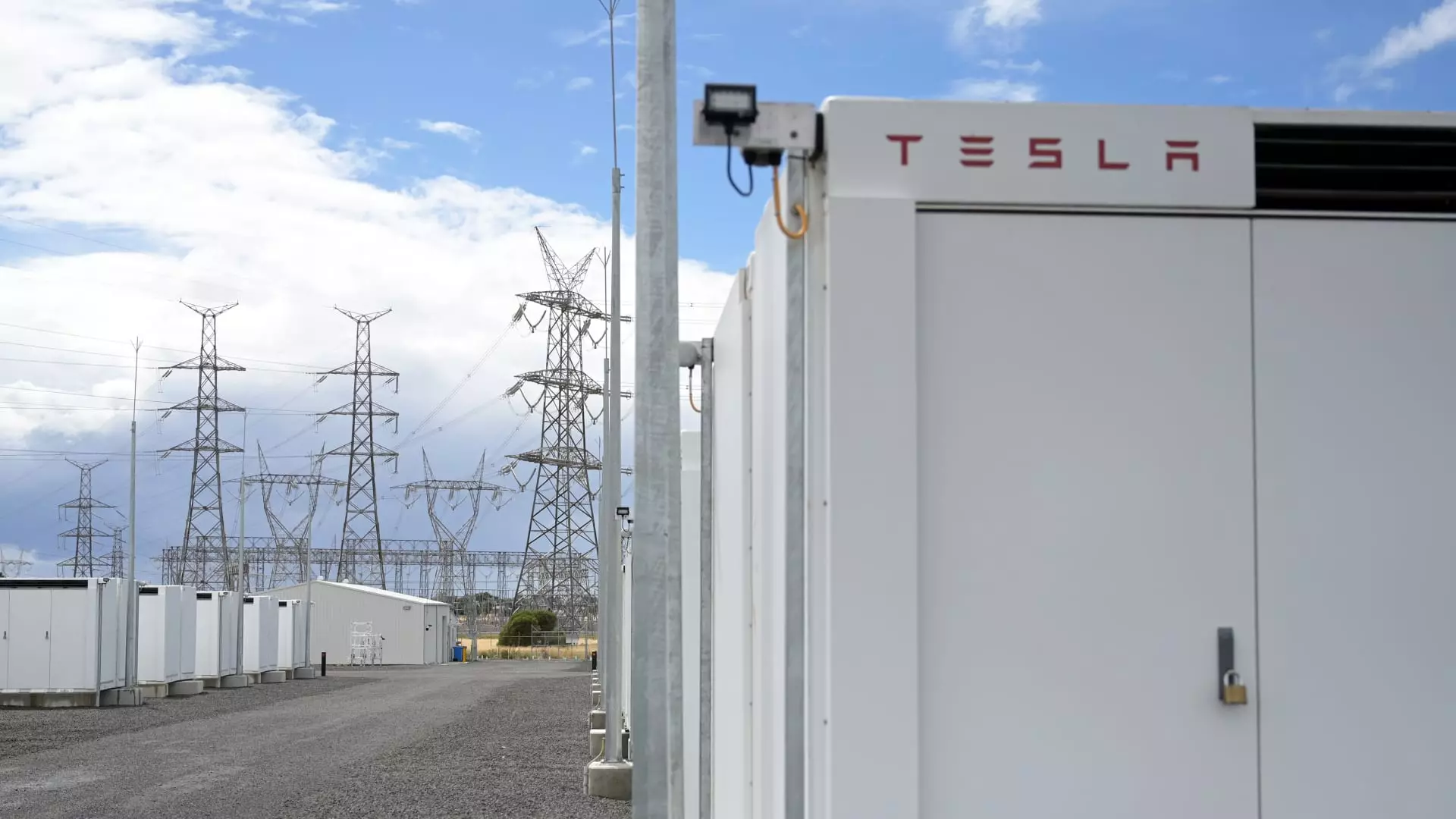Tesla, the audacious electric vehicle giant, has made headlines yet again with its ambitious venture to build the largest grid-scale battery power plant in China. Breaking ground on a project valued at 4 billion yuan (approximately $556 million), the deal comes amid a cocktail of escalating geopolitical tensions and an ever-tightening grip on energy innovation. This isn’t merely a business transaction; it’s a nuanced chess game laden with implications for both industry competition and international relations.
Seizing Opportunity Amid Tension
China and the United States are in a delicate dance, with trade barriers raised and diplomatic ties fraying. Against this backdrop, Tesla’s decision to plant its stakes in the Chinese energy sector raises eyebrows. At a time when many companies might shy away from such a venture due to political risk, Tesla seems to be doubling down, showing an aggressive approach that is often lost on more traditional corporations. The company’s choice to embark on this journey highlights a critical aspect of modern business strategy: the ability to pivot and adapt in the face of adversity.
This is not an isolated move; it’s an assertion that technology companies, particularly those as highly visible as Tesla, can transcend geopolitical tensions by offering invaluable solutions to essential problems like energy storage. The plant promises to provide utility-scale battery energy storage systems that can stabilize energy supply, especially as more intermittent sources like wind and solar become prevalent in the energy mix. By leveraging innovative technology, Tesla is cementing its role as a leader in the energy revolution, whether or not political winds are favorable.
Innovation versus Tradition: The Competitive Landscape
Tesla’s foray into the Chinese energy market isn’t without its difficulties. The American innovator faces fierce competition from domestic powerhouses such as CATL and BYD, both of whom have substantial footholds in the battery market. With CATL capturing around 40% of the global battery market share, the stakes are high. The question arises: can a foreign entity successfully compete against entrenched domestic players?
Tesla’s Gigafactory in Shanghai has already produced over 100 Megapacks, each capable of delivering one megawatt of power for four hours. This production scale is nothing short of impressive and showcases Tesla’s operational efficiency. However, the pricing structure for its Megapacks in China has not been clarified, leaving uncertain how this could affect its competitiveness. Will the local manufacturing be able to undercut prices enough to attract wary consumers? Or will Tesla’s brand reputation carry enough weight to sustain its growth amidst formidable competitors?
The Balance of Progress and Politics
The implications of Tesla’s new deal extend beyond mere economic transactions; they touch on the larger narrative of China-U.S. relations and the role of innovation in an increasingly polarized world. With the backdrop of tariffs and trade wars reminiscent of former President Trump’s administration, it is intriguing to witness how Tesla navigates these waters. Elon Musk’s close alignment with Trump initially positioned Tesla in a complex light; now, as the trade landscape shifts, the company must pivot yet again.
Notably, China has laid out ambitious targets for battery-powered electricity, aiming to increase its total capacity to 40 gigawatts by 2025. This robust government backing serves as both an opportunity and a challenge for Tesla. The demand for grid-scale battery installations is undeniable, which could push Tesla’s initiative to unforeseen heights despite the external pressures it faces. The fact that Tesla is exporting Megapacks to Europe and Asia illustrates its commitment to capturing global demand, while operating under potentially hostile conditions back home.
The Future of Energy: A Center-Right Liberal Perspective
From a center-right liberal perspective, Tesla’s maneuvering in China is not just about business; it reflects a broader ideological stance on energy independence and innovation. Rather than stalling or retreating amid challenges, Tesla exemplifies the entrepreneurial spirit that drives progress and growth. This aligns with the belief that market-driven solutions can lead to advancements in sustainable technology, despite existing political turmoil between nations.
Critics may argue that Tesla’s collaboration with China could weaken American dominance in technology. However, viewing this from a broader lens, it could be seen as a mutually beneficial relationship that promotes technological advancement and energy sustainability. The bigger picture shows that fostering international partnerships may ultimately yield better results for achieving climate goals and technological innovation. Tesla’s journey is emblematic of a new frontier in the energy sector, one that is not limited by national boundaries but instead energized by global demand for sustainable solutions.

